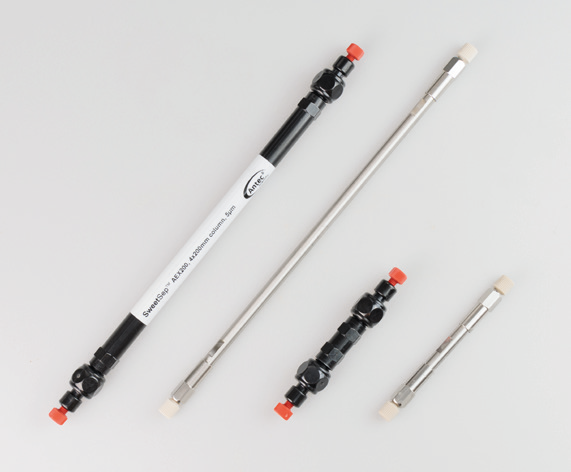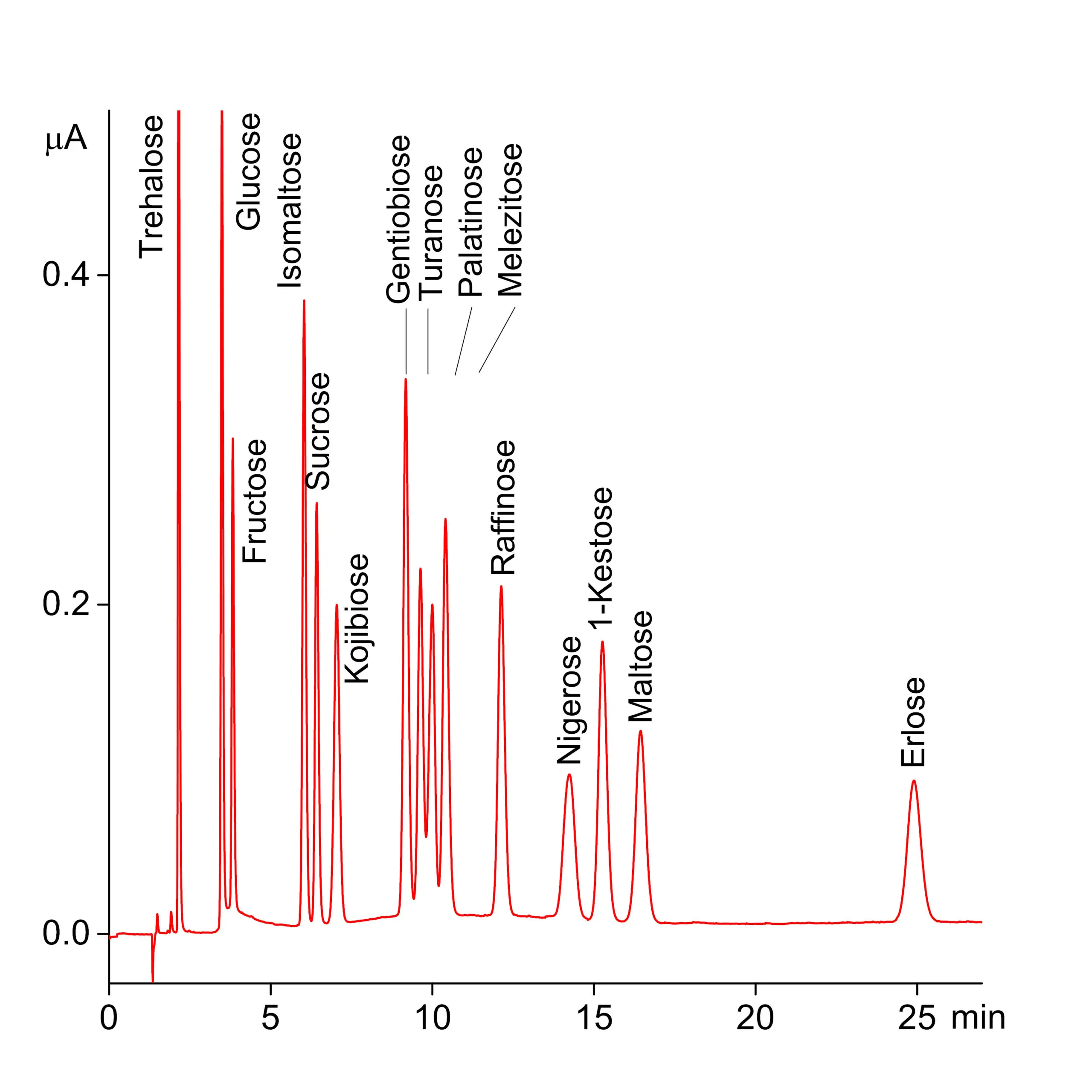Columns
SweetSep™ – The New Benchmark for Carbohydrate Analysis
High-Performance Anion Exchange Chromatography with Pulsed Amperometric Detection (HPAEC-PAD) is a proven technique for carbohydrate analysis in food and life science research. The newly developed SweetSep™ AEX stationary phase sets a new standard, delivering rapid, high-resolution separation for all classes of carbohydrates.

Key Features of SweetSep™ HPAEC Columns
- Rapid, reliable carbohydrate analysis
- Broad pH stability (1–14)
- Suitable for mono- to polysaccharides
SweetSep™ columns are packed with highly monodisperse resin particles, ensuring fast and superior separation of mono-, oligo-, and polysaccharides using PAD and/or MS detection. They are optimized for the analysis of a wide range of carbohydrates—from monosaccharides and tetrasaccharides to larger oligosaccharides such as fructo-oligosaccharides (FOS), galacto-oligosaccharides (GOS) and pectin hydrolysates —making them ideal for applications in prebiotics, food, and beverages.
Additional Application Areas
- Lactose in lactose free labelled products
- Detection of artificial sweeteners
- Carbohydrate profiling in complex biomass hydrolysates
- Carbohydrates in clinical and diagnostic samples, including FDG
- Glycan and sialic acid analysis from glycoproteins
Stationary Phases
The SweetSep columns are available in different chemistries, AEX18, AEX20 and AEX200. The main difference lies in the functionalization of the latex particle and the capacity.
- SweetSep™ AEX18 – FDG according USP and EP, based on the official EP 11.3 and USP-NF 41 (2023) methods, Read more!
- SweetSep™ AEX20 – Fast & high-resolution separation of mono- to tetrasaccharides from food samples, including monosaccharides from glycoproteins, Heparin, Read more!
- SweetSep™ AEX200 – Universal column for separation of mono- to polysaccharides in F&B, plants and glycoproteins (glycans), biomass, Read more!


Analysis of carbohydrates on an AEX20 (top) and an AEX200 (bottom) column. Click to see in more detail.
Speciality columns
Borate Trap column
The borate ion trap column removes borate contaminants from mobile phases. It results in significant improvement in peak shape of sugar alcohols (e.g., mannitol and sorbitol), fructose and mannose, etc. The trap column is simply placed between the pump and the injection valve (autosampler). Read more!
Amino Acid Trap column
An amino acid trap precolumn eliminates amino acids from the injected sample, and removes interfering peaks from the chromatogram in monosaccharide analysis using HPAEC-PAD. For more information. Read more!